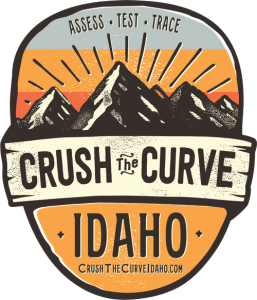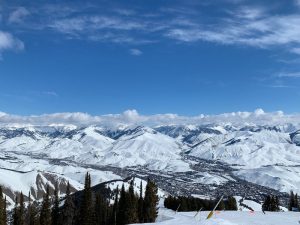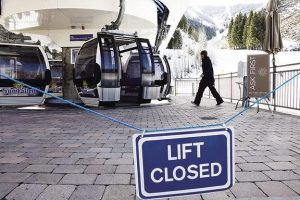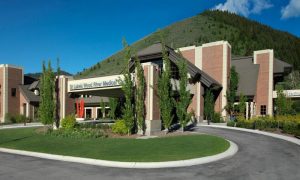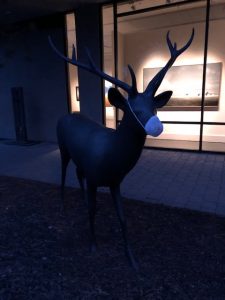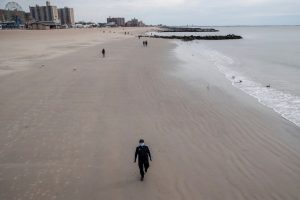ID
Sun Valley Begins Antibody Testing
April 8, 2020You have a chance to help others. We have just announced the start of a clinical study to test for COVID-19 antibodies in our community. Please CLICK HERE for the press release. The clinical study is part of a collaboration with Albany College of Pharmacy and Health Sciences and the Fred Hutchinson Cancer Research Center to help further the fight against COVID-19. We are asking for volunteers to help with the research. Initially we are looking for 400 volunteers, although that could be increased in the future.
Teamwork – that is what makes things happen. There are too many people to mention that have helped initiate this exciting academic study – and we are just getting started! Through community relationships, experts in the field and highly respected academic institutions, we have managed to put together a team of leading epidemiologists. However, it all starts at home. Fire Chief Bill McLaughlin and Blaine County Emergency Medical Director Terry O’Conner are spearheading this initiative. Further afield, we are delighted to be partnering with two outstanding academic institutions – I am thankful for the local connections that made this possible.-Ketchum Mayor Neil Bradshaw
Antibody Study and Testing Begins in Blaine County
KETCHUM, Idaho – The Ketchum Fire Department and Blaine County Ambulance District have partnered with the Albany College of Pharmacy and Health Sciences, and the Fred Hutchinson Cancer Research Center to conduct a study that includes antibody testing for residents of Blaine County.
The study will start with a random sample of 400 Blaine County residents to determine the prevalence of COVID-19 antibodies in symptomatic and asymptomatic individuals to determine how many asymptomatic, or silent, cases there are in the community.
Officials emphasize this is a study; not a medical diagnosis, vaccine or guarantee of immunity to COVID-19.
Initially, the study will analyze the total number of COVID-19 cases in the sample group compared to the number of cases tested. This information will help further the fight against COVID-19 to help scientists slow or stop the disease. It will also help discover if antibody presence confers immunity.
Blaine County residents wishing to participate in the study, including the testing, may register at https://redcap.acphs.edu/surveys/?s=3MDMEDTX4L. Residents will be screened and chosen for the study based on demographic criteria established for the study.
Eventually, the study will provide information to the community on when it is safe to resume normal activity.
“We are grateful for the efforts led by Ketchum Fire Chief Bill McLaughlin and Blaine County EMS Director Terry O’Connor to spearhead this study,” said Mayor Neil Bradshaw. “A keen interest from the partnering organizations and the perseverance of our Chief and EMS Director kept the ball rolling and made the testing a reality for our community.”
Further analysis of the study will help to:
- Determine whether there are indicators for predicting a mild or severe reaction to COVID-19
- Determine the transmissibility of the virus
- Predict the duration of a COVID-19 outbreak and whether herd immunity can be reached in a community
- Develop vaccines for COVID-19
- Determine if there is a correlation between certain classes of blood pressure medication and severity of illness
“I am proud of the collaboration between Blaine County and our cities,” said Blaine County Commissioner Jacob Greenberg. “Not only will this testing in the County help the study, it is a chance for the volunteers to help friends, relatives, neighbors and ultimately, all of humanity.”
https://www.crushthecurveidaho.com
WHAT IS CrushTheCurveIdaho.com?
Providing COVID-19 testing to workers deemed essential during this global pandemic.
CrushTheCurveIdaho.com is a coordinated effort by Idaho businesses, innovators, and leaders to reduce the spread of COVID-19. Our mission is to procure testing specifically for Idaho companies to make it easier for essential workers to be tested. We have access to a large supply of test kits and are currently working to secure an antibody test that will be available soon.
WE ARE NOT a replacement for traditional doctors offices and others doing testing for individuals with symptoms or who meet other testing requirements.
GET TESTED.
SAVE LIVES.
GET BACK TO WORK.
Please, stay away.
March 28, 2020Sun Valley, Idaho: ‘No One Should Come Here’
NPR/Kirk Siegler
Blaine County, Idaho, which includes the resort town of Sun Valley, has one of the highest known rates of COVID-19 cases in the West.
‘To hear year-round Sun Valley, Idaho, residents like Justin Malloy tell it, town right now is as crowded as you’d expect to see it in the peak Fourth of July or Christmas seasons. The small airport is packed with private jets. And then there’s the parking lot at the Atkinsons’ Supermarket, one of only two in town where bread and essential cleaning items are particularly hard to come by.
“We’ve been seeing a lot of Washington plates, a lot of California plates, their cars just full of all of their stuff that they’ve brought from out of state,” Malloy says.
This has fueled outrage on social media, and on unusually crowded hiking and ski trails, where locals are wondering aloud whether rich people are fleeing cities to seek refuge in rural Idaho, and unknowingly making the public health crisis here even worse.
“It seems likely that people were fleeing other places and not recognizing that they were then bringing the disease with them from Seattle, or other areas where they might live part time,” says Dr. Josh Kern, vice president of medical affairs for St. Luke’s Wood River Medical Center in Ketchum.
While resort towns like this can typically house a lot of tourists or second- and third-home owners, that doesn’t extend to St. Luke’s, which has only 25 beds. The hospital has had dozens of COVID-related admissions and officials warn there are likely many more cases in the community than what’s been diagnosed.
That’s leading to some impassioned pleas to take the recent, strict self-isolation orders seriously.
“No one should come here,” says Dr. Brent Russell, a local emergency room physician.
Russell should know. He has COVID-19. He’s been very sick, so can’t work at this critical time.
“We have a really high percent of COVID spreading among the population here,” Russell says. “If you come here, that is putting your life at risk and it’s putting other lives at risk.”
The hospital is part of a regional health care system, St. Luke’s, so for now, support has been coming from hospitals in Twin Falls and Boise where there aren’t as many known cases. Yet.
https://www.npr.org/2020/03/27/822122059/sun-valley-idaho-no-one-should-come-here
Blaine County COVID rates rival NYC, Wuhan
News analysis: Comparisons are difficult, but the valley has one of the nation’s highest concentration of coronavirus cases
Idaho Mountain Express/Mark Dee
The raw numbers may pale compared to major cities, but Blaine County had the nation’s highest concentration of lab-confirmed COVID-19 cases in the nation yesterday, according to data compiled by the New York Times.
And, its calculation is an underestimate.
So, what do you do with that information? “Take this seriously,” according to a group of eight St. Luke’s Wood River emergency physicians. Self-isolate and abide by the shelter-in-place order designed to stem the spread of the disease.
“We want you to know, given the community spread, that you should not wait for the test or test result,” Drs. Terry O’Connor, Malie Kopplin, Deb Robertson, Jim Torres, Brock Bemis, Keith Sivertson, Terry Ahern and Brent Russell wrote in a letter to the Idaho Mountain Express published Wednesday. “There are measures you can take now to protect yourself, your family, friends, neighbors and way of life. Self-isolate. Don’t leave the Wood River Valley to recreate elsewhere. It’s well known that we have a very high rate of infection; 5B plates are not going to be welcomed outside of Blaine County. Moab and Twin Falls don’t need our virus. Stay home. Save lives.”
Blaine County Deals With Coronavirus Hot Spot As Other Rural Idaho Communities Prepare For the Worst
Boise State Public Radio/Rachel Cohen
St. Luke’s Wood River Medical Center suspended normal operations last week. Coronavirus screening sites, a walk-in-clinic and the emergency department remain open.
If a patient needed to be hospitalized for symptoms of coronavirus in the Wood River Valley today, they’d most likely be transported — by ambulance or helicopter — to a hospital in Twin Falls an hour and a half south, or one in Boise two and a half hours west.
Blaine County — home to Sun Valley, with a population of about 22,000 — is the epicenter of Idaho’s coronavirus outbreak.
“So currently any patient who would be that sick would not be maintained up here. We would be transferring them either down to Magic Valley or Boise,” said Dr. Frank Batcha, a family physician at the St. Luke’s clinic in nearby Hailey.
Patients seeking care for routine check-ups, cancer screenings or caesarean sections are also being directed to other hospitals.
“Are we concerned about not having enough resources? Absolutely. And that’s why we’re trying to conserve what we have right now, particularly our manpower,” said Batcha, who, these days, is typically clad head to toe in personal protective gear as he screens patients for COVID-19 in the parking lot of the Ketchum hospital.
St. Luke’s Wood River is part of the statewide St. Luke’s Health System with seven hospitals, which means staff and supplies can, and are, being dedicated to the Ketchum hospital.
“If we were an isolated, rural hospital, we would be crippled right now, because we have so many people who are out with the illness,” Russell told Boise State Public Radio’s George Prentice.
But strains extend beyond the hospital. Bill McLaughlin, the Ketchum Fire Chief who also oversees EMS services for the north half of the valley, said around a quarter of his paramedics are out because they have coronavirus symptoms or have potentially been exposed in the community.
“We only have a couple paramedics on each day, and if, for some reason, one of them gets sick, then that entire shift would be knocked out for 14 days,” McLaughlin said.
Many volunteers who used to help out are staying home, too.
[full article]
COVID…and hope.
March 23, 2020Sharing a message from one of the spiritual leaders in our valley, Sun Valley, Idaho.
’Those who love their own noise are impatient of everythingelse. They constantly defile the silence of the forests and the mountains and the sea.They for through silent nature in very direction with their machines, for fear that thecalm world might accuse them of their own emptiness. The urgency oftheir swift movement seems to ignore the tranquility of nature bypretending to have a purpose. The loud plane seems for a moment to deny the realityof the clouds and of the sky by its direction, its noise, and its pretendedstrength. The silence of the sky remains when the plane has gone. Thetranquility of the clouds will remain when the plane has fallen apart. It is thesilence of the world that is real. Our noise, our business, and all our fatuous statementsabout our purposes—these are the illusions.’-No Man Is an Island [1955]
The Virus Can Be Stopped, but Only With Harsh Steps, Experts Say
Terrifying though the coronavirus may be, it can be turned back. China, South Korea, Singapore and Taiwan have demonstrated that, with furious efforts, the contagion can be brought to heel.
Whether they can keep it suppressed remains to be seen. But for the United States to repeat their successes will take extraordinary levels of coordination and money from the country’s leaders, and extraordinary levels of trust and cooperation from citizens. It will also require international partnerships in an interconnected world.
There is a chance to stop the coronavirus. This contagion has a weakness.
Although there are incidents of rampant spread, as happened on the cruise ship Diamond Princess, the coronavirus more often infects clusters of family members, friends and work colleagues, said Dr. David L. Heymann, who chairs an expert panel advising the World Health Organization on emergencies.
No one is certain why the virus travels in this way, but experts see an opening nonetheless. “You can contain clusters,” Dr. Heymann said. “You need to identify and stop discrete outbreaks, and then do rigorous contact tracing.”
But doing so takes intelligent, rapidly adaptive work by health officials, and near-total cooperation from the populace. Containment becomes realistic only when Americans realize that working together is the only way to protect themselves and their loved ones.
In interviews with a dozen of the world’s leading experts on fighting epidemics, there was wide agreement on the steps that must be taken immediately.
Those experts included international public health officials who have fought AIDS, malaria, tuberculosis, flu and Ebola; scientists and epidemiologists; and former health officials who led major American global health programs in both Republican and Democratic administrations.
Americans must be persuaded to stay home, they said, and a system put in place to isolate the infected and care for them outside the home. Travel restrictions should be extended, they said; productions of masks and ventilators must be accelerated, and testing problems must be resolved.
[…]
Just as generals take the lead in giving daily briefings in wartime — as Gen. Norman Schwarzkopf did during the Persian Gulf war — medical experts should be at the microphone now to explain complex ideas like epidemic curves, social distancing and off-label use of drugs.
The microphone should not even be at the White House, scientists said, so that briefings of historic importance do not dissolve into angry, politically charged exchanges with the press corps, as happened again on Friday.
Instead, leaders must describe the looming crisis and the possible solutions in ways that will win the trust of Americans.
Above all, the experts said, briefings should focus on saving lives and making sure that average wage earners survive the coming hard times — not on the stock market, the tourism industry or the president’s health. There is no time left to point fingers and assign blame.
The next priority, experts said, is extreme social distancing.
If it were possible to wave a magic wand and make all Americans freeze in place for 14 days while sitting six feet apart, epidemiologists say, the whole epidemic would sputter to a halt.

